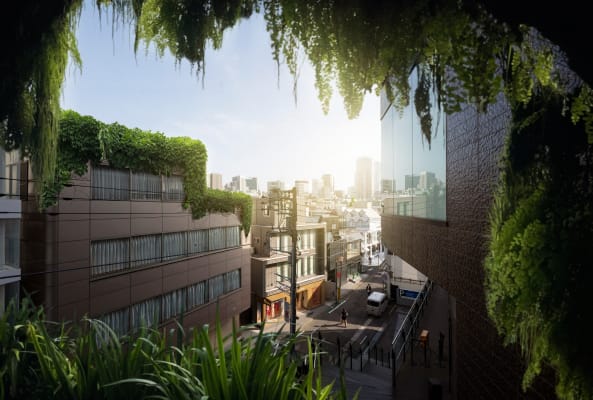Challenges and Opportunities in Scaling...
Read more
Biophilic design, a concept rooted in the innate human connection to nature, is revolutionizing the way we approach architecture and building design. By integrating natural elements and patterns into the built environment, biophilic design aims to enhance human well-being, productivity, and overall satisfaction. Beyond these benefits, biophilic design also holds tremendous potential for improving energy efficiency in buildings, contributing to sustainability and environmental stewardship.

One of the key principles of biophilic design is the incorporation of natural light and ventilation into building spaces. By maximizing access to daylight and fresh air, biophilic buildings can reduce reliance on artificial lighting and mechanical ventilation systems, thereby lowering energy consumption and operating costs. Large windows, skylights, and atriums are common features of biophilic design that not only enhance indoor comfort and aesthetics but also promote energy efficiency by minimizing the need for artificial lighting and cooling.
Moreover, biophilic design emphasizes the use of natural materials and finishes that have low embodied energy and environmental impact. From sustainably sourced wood and stone to recycled glass and clay, biophilic buildings prioritize materials that promote ecological sustainability and contribute to a healthy indoor environment. By choosing materials with high thermal mass and insulating properties, biophilic buildings can reduce heating and cooling loads, improving energy efficiency and occupant comfort.
Biophilic design also encourages the integration of green spaces and vegetation into building design, both indoors and outdoors. Green roofs, living walls, and indoor plants not only enhance the visual appeal of buildings but also provide natural insulation, shade, and humidity control, reducing the need for artificial heating and cooling. Additionally, green spaces promote biodiversity, improve air quality, and mitigate the urban heat island effect, further enhancing the environmental performance of biophilic buildings.
Furthermore, biophilic design fosters a deeper connection between occupants and the natural world, leading to behaviors that support energy conservation and sustainability. Studies have shown that exposure to nature in the built environment can increase awareness of energy use, encourage pro-environmental attitudes, and promote sustainable lifestyle choices. By fostering a sense of stewardship and responsibility towards the environment, biophilic design can inspire occupants to adopt energy-efficient practices and contribute to a greener, more sustainable future.
In conclusion, biophilic design offers a holistic approach to building design that not only enhances human well-being and connection to nature but also promotes energy efficiency and environmental sustainability. By embracing natural elements, materials, and patterns, biophilic buildings can reduce energy consumption, improve indoor comfort, and create healthier, more sustainable living and working environments for generations to come.